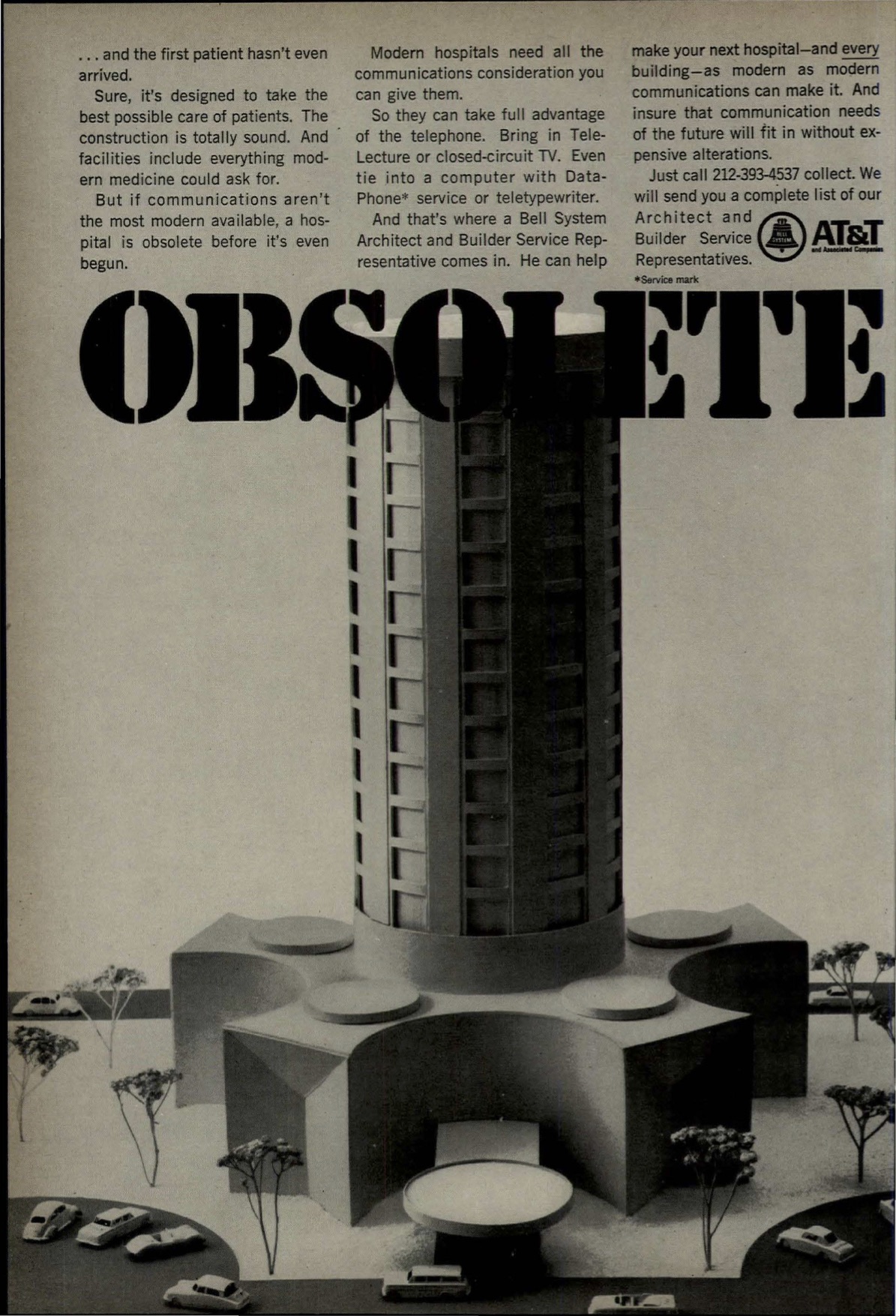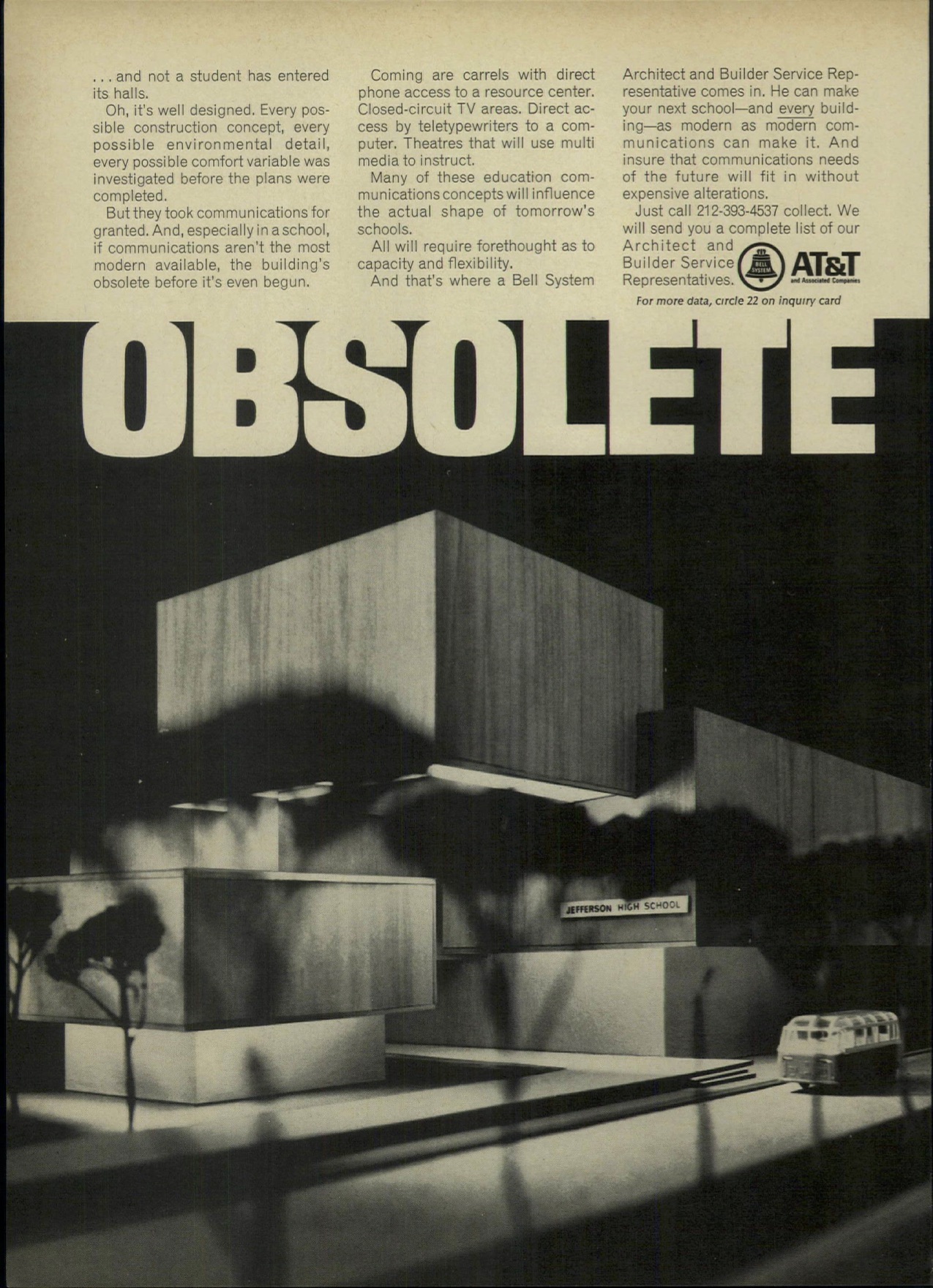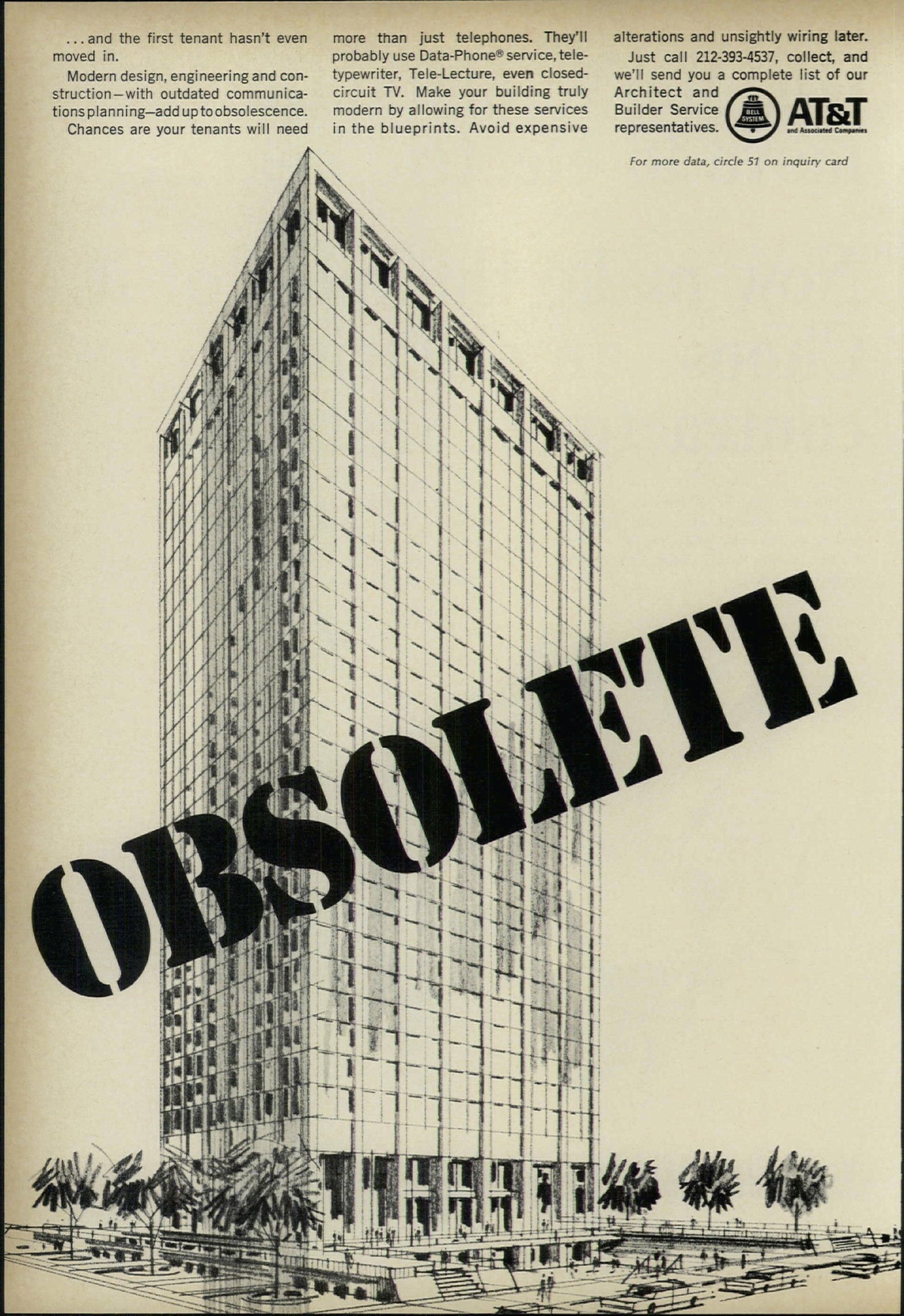Infrastructure planning now and then: everything old is new again as we learn planning lessons from 50 years ago, for the next 30 years.
Infrastructure Planning Now and Then
It may be difficult to imagine a time when building designers needed to be told to include infrastructure for phone systems, and later computer networks. Audiovisual systems back in the day were not non-existent, but were Art Department-produced posters, charts and graphs, and slides in a carousel projector. Long-gone are the overhead transparencies that needed nothing more than an extension cord and a pop-up screen in a darkened room. In the last decades, we’ve seen the proliferation of AV carts give way to BYOD (bring your own device) in the conference room, classroom, and hospital.
Everything Old is New Again
Looking through an archive of past issues of Architectural Record, I was enjoying the articles covering the bold new works at the time which have become timeless and classic examples of design in our own era. I came across a series of AT&T ads from the late 60s, encouraging architects to include a “Bell System Architect and Builder Service Representative” on their projects, in order to properly plan for the communications capabilities of tomorrow and avoid obsolescence.
Hospital
Click image to view full size PDF.

“Obsolete… and the first patient hasn’t even arrived. Sure, it’s design to take the best possible care of patients. The construction is totally sound. And facility include everything modern medicine could ask for. But if communication aren’t the most modern available, a hospital is obsolete before it’s even begun. Modern Hospitals need all the communications consideration you can give them. So they can take full advantage of the telephone. Bring in Tele-Lecture or closed-circuit TV. Even tie into a computer with Data-Phone service or teletypewriter.”
Architectural Record, March, 1968, p76, AT&T ad
School
Click image to view full size PDF.

“Obsolete… and not a student has entered its halls. Oh, it’s well designed. Every possible construction concept, every possible environmental detail, every possible comfort variable was investigated before the plans were completed. But they took communications for granted. And, especially in a school, if communications aren’t the most modern available the building’s obsolete before it’s even begun. Coming are carrels with direct phon access to a resource center. Closed-circuit TV areas. Direct access by teletypewriters to a computer. Theaters that will use multi media to instruct.”
Architectural Record, August, 1968, p32, AT&T ad
Corporate
Click image to view full size PDF.

“Obsolete… and the first tenant hasn’t even moved in. Modern design, engineering and construction – with outdated communication planning – add up to obsolescence. Chances are your tenants will need more than just telephones. They’ll probably use Data-Phone service, teletypewriter, Tele-Lecture, even closed-circuit TV. Make your building truly modern by allowing for these services in the blueprints. Avoid expensive alterations and unsightly wiring later.”
Architectural Record, November, 1968, p92, AT&T ad
Technology consultants have been engaged in this conversation since I entered the industry 30 years ago. It is heartening to see, not only has our messaging been consistent, but had been a prescient message from the worldwide progenitor of the communications networks that we as IT, audiovisual, and multimedia consultants design into our client’s facilities today.
Infrastructure Planning Needs Analysis
Gaining an understanding of project needs is about half of what a certified audiovisual designer does, and knowing the available infrastructure and technology is the other half. One of the most pointed elements that struck me in these old ads were the references to “the most modern [communications] available”, which included “…carrels with direct phone access to a resource center.”, “Tele-Lecture or closed-circuit TV…”, “Data-Phone service…” or “…access to teletypewriters to a computer.” I should note, Tele-Lecture was nothing more than a marketing moniker for the simple audioconferencing bridging we’ve known for many years. Other technology, like 110 Baud Data-Phone were hopelessly outclassed even by the early 1980s. While services like those may not have been popular at the time, the pathways and spaces allocated for these services were a blessing for the proliferation of telephony, computer networks and multimedia systems that came later.
Even through those services may not have held much importance on day one, planning for the eventuality of such services, provided sorely needed space. The evolution from key-phone to CATV, Token-Ring IBM networks, to Thick-Net, Thin-Net and finally the twisted-pair Ethernet and fiber-optic infrastructures we use today was inevitable. But, if the space to accommodate those unknowns were not present, the buildings of that time would have become, and many eventually were, obsolete. Infrastructure is and was a pressing need. It was all the more necessary in the 1960s and early 70s when the proliferation of exposed structure, modernism, and Brutalist design limited the amount of façade available to hide cabling and systems over the ensuing years.
“Make your next [building] – and every building – as modern as modern communications can make it. And be sure communications needs of the future will fit in without expensive alterations.”
Architectural Record, March, August, November, 1968, AT&T ads
Professional Help With New and Existing Buildings
Current AV equipment is already obsolete after 3 to 5 years. With such a critical need to look to the future of audiovisual technology, it’s easy to imagine how an IT, MEP, EE or other part-time AV professional might feel overwhelmed. ABD Engineering & Design’s full-time AV professionals take the long-view. We help you design your client’s buildings to be ready for the networked audiovisual and multimedia of opening day; plus years 3 through 5, and beyond, for the life of the facility.
